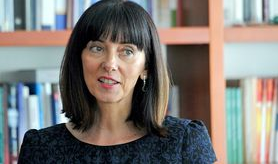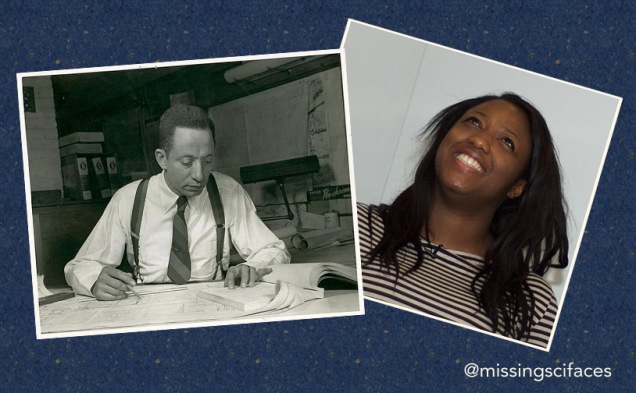Last year in Black History Month, I wished I could find so many photos of ground-breaking African-American women scientists in Wikipedia that I could easily tweet one a day for the month. So I set out to dig out photos and stories of women to add to Wikipedia – and this year I can tweet a woman a day. And I’ll add them to this post each day…. Scroll through backwards here in this post – or starting from day 1 in the Twitter thread.
Coming soon, too: a Wikipedia project for Black History Month that I’ve been working on for months! So stay tuned. UPDATE: Here it is – the big expansion and re-vamp of the Wikipedia page African-Americans in mathematics.
(Photos are all via Wikipedia/Wikimedia Commons unless otherwise stated.)
28 February: Ruth Ella Moore
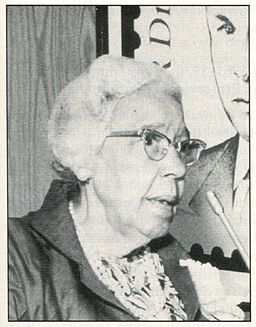
Ending with the first African-American woman to gain a PhD in a natural science: ugh Ella Moore (1903-1994). She earned her Bachelor of Science degree from Ohio State University in 1926, her master’s in 1927, and her PhD – on tuberculosis – in 1933. Moore taught at Howard University from 1948 to her retirement in 1971, appointed professor in 1960. She published papers in several areas, notably on blood groups in African-Americans, and the sensitivity of gut microorganisms to bacteria. Moore was honored by the US Congress in 2005. More at Wikipedia.
27 February: Mae Jemison

Mae Jemison (b 1956) is the first African-American woman to go into space – on the Space Shuttle Endeavor in 1992. She rent to Stanford at 16, graduating with a science degree in chemical engineering in 1977, having also fulfilled requirements for a bachelor’s in Afro-American history. She gained a medical degree from Cornell in 1981, and also took modern dance classes at Alvin Ailey. Jemison served in the Peace Corps from 1983 to 1985, and also worked at the CDC on vaccines. She joined NASA in 1987, doing bone cell experiments in space, as well as studying weightlessness and motion sickness in herself and fellow astronauts. She also did an experiment on frogs, to see how tadpoles would develop in zero gravity. Jemison left NASA in 1993, becoming a professor at Dartmouth and Cornell, and founding a technology company as well as organizing space camps for children. She also played a role in a Star Trek episode in 1993. More at Wikipedia.
(Photo from a 2015 keynote talk by Jemison, of her about to board the space shuttle: photo of photo by me.)
26 February: Shirley Ann Jackson

Shirley Ann Jackson (b 1946) is the only African-American woman awarded the National Medal of Science (2014). She was the second African-American woman to gain a doctorate in physics (1973) and the first to gain one from MIT, where she was co-chair of the Black Students Union. She studied the properties of novel semiconductor systems. She was the first woman and first African American to chair the US Nuclear Regulatory Commission. Jackson became the president of the Rensselaer Polytechnic Institute in 1999, She has served on many boards of directors, including the New York Stock Exchange. Jackson was inducted into the National Women’s Hall of Fame in 1998. More at MIT and Wikipedia.
(Photo from a YouTube video about the establishment of MIT’s Black Students Union in the 1960s.)
25 February: Euphemia Lofton Haynes
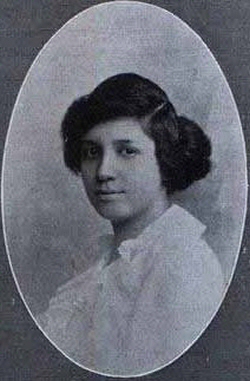
(Martha) Euphemia Lofton Haynes (1890-1980) was the first African-American woman to gain a PhD in mathematics (Catholic University of America, 1943). She had graduated with a major in mathematics from Smith College in 1914. Haynes taught in the high school system in Washington DC. In 1930 created and chaired the mathematics department at Miner’s Teacher’s College (now the University of the District of Columbia), retiring from that position after 30 years. She was active in many church, community, and women’s groups, including the NAACP and the American Association of Academic Women. She received an award from the Pope, and a Washington DC school is named after her. More at the Catholic University of America and Wikipedia.
24 February: Jane Hinton

Jane Hinton (1919-2003) was the co-developer of Mueller-Hinton agar (published in 1941) when she was working in Harvard as a laboratory technician. Mueller-Hinton agar is a culture medium in which bacteria can thrive. It has become one of the standard methods used to test bacterial resistance to antibiotics. In 1942 she joined the War Department, serving as a laboratory technician in Arizona. After the war, she studied veterinary medicine at the University of Pennsylvania. She was awarded her doctor’s degree in veterinary medicine in 1949 – the co-first African-American woman veterinarian. (Alfreda Johnson Webb was the other, graduating from Tuskegee University that year). Hinton worked first as a small animal veterinarian, and later studying and responding to livestock epidemics for the federal government. Jane Hinton’s father was microbiologist William Augustus Hinton, the developer of a widely-used test for syphilis and the first African American to write a medical textbook and teach at Harvard. More at Wikipedia.
23 February: Jane Cooke Wright

Jane Cooke Wright (1919-2013) graduated from medical school in New York in 1945. She was one of the pioneers of chemotherapy and medical oncology (the specialty for treating cancer). Wright was the only woman and only African American among the 7 physicians who founded ASCO, the enormously influential American Society of Clinical Oncology. Her pioneering research included work on methotrexate, one of the first anti-cancer drugs, growing tumor specimens in the lab so drugs could be tested on them, and pioneering the use of multiple drugs sequentially to treat cancer in the 1960s. She published more than 100 scientific papers. In 1964, she was one of only 2 women physicians appointed to the President’s Commission on Heart Disease, Cancer, and Stroke. More at ASCO, the Lancet, and Wikipedia.
(Photo ASCO, copyright not known.)
22 February: Margaret Strickland Collins

Margaret James Strickland Collins (1922-1996) was a child prodigy and pioneering African-American woman field scientist. She started university when she was 14, and was the third to gain a PhD in zoology (University of Chicago 1950), and died in the field, as she hoped to, still researching at the age of 73. She is the co-discoverer of the Florida damp wood termite, and was a professor at Florida A&M University. She also undertook research at the Smithsonian National Museum of Natural History. Collins did extensive field work in the Americans and Caribbean. She was also an active advocate of civil rights in the 1950s, receiving a bomb threat for a planned talk on biology and equality and was followed by police and FBI for driving people during a bus boycott. She led a (published) AAAS symposium in 1979 on Science and the Question of Human Equality. More here, at Wikipedia, and in her Washington Post obituary.
21 February: Inez Beverly Prosser

Inez Beverly Prosser (1897-1934) was the first African-American woman to gain a PhD in psychology (University of Cincinnati, 1933). She died in a car crash the next year, only 38 years of age. She had been one of 11 children, from a working class family in Texas, and she taught at universities and high schools. Her doctoral dissertation was a study comparing how African-American children fared in segregated and mixed schools. It demonstrated the toll racism in mixed schools took on black children. It was influential in Brown vs Board of Education, the US Supreme Court case that established school segregation as unconstitutional in 1954. More at Wikipedia and the American Psychological Association.
(Provenance and copyright of photo unknown.)
20 February: Marie Clark Taylor

Marie Clark Taylor (1911-1990) was likely the first African-American woman to gain a PhD in botany, and the first woman to gain a science PhD from Fordham University in New York (1941). She studied photomorphogenesis, the influence of light on plant growth. Taylor served in the Red Cross in New Guinea during World War II, and then joined the botany department at Howard University. She became chair of the department, holding that position till her retirement in 1976. She established summer science institutes for high school teachers, and a summer science series for teachers through the National Science Foundation on using plants and microscopes to teach cell life and other aspects of biology. She took this teaching agenda international, after a request by the U.S. President. An auditorium at Howard University is named in her honor. More at Wikipedia.
19 February: Flemmie Pansy Kittrell

Flemmie Pansy Kittrell (1904-1980) was the African American to gain a PhD in nutrition, and the first African-American woman to gain a PhD in any subject from Cornell University (1936). She studied nutrition of families in America and Africa, and was an international activist against hunger. Kittrell was professor of home economics and dean of women at the Hampton Institute, then professor of home economics at Howard University until her retirement. At Howard, she expanded home economics to include child development and other areas of science. She was instrumental in establishing the Head Start Program in the 1960s, and was honored by the National Council of Negro Women in 1961. More at Wikipedia.
18 February: Angie Turner King

Angie Turner King (1905-2004) was one of the first African-American women to gain degrees in chemistry and mathematics, gaining bachelor’s degree in both in 1927, and a master’s degree in 1931. She went on to a PhD in mathematics education (University of Pittsburgh, 1955), the first African-American woman to do so. King was brought up by her formerly enslaved grandparents after she was orphaned young. She was only allowed to attend school later than most children: “I had it tough”, she said, “but it hasn’t bothered my mind”. She taught mathematics and chemistry, in high schools and colleges. King was a powerful influence on many of her students, including Katherine Johnson (the central mathematician in Hidden Figures). More at Wikipedia.
17 February: Roger Arliner Young

Roger Arliner Young (1889-1964) was the first African-American woman to gain a PhD in zoology (University of Pennsylvania, 1940). She was the first African-American woman to have her work published in Science (1924), and the first at the prestigious Marine Biological Laboratory at Woods Hole. Her work on the effects of radiation on marine life makes her one of the early ecologists, too. Young’s eyes were permanently damaged by ultraviolet rays used in her experiments, and she struggled under permanent debt as a result of her PhD and being the sole support for her ill mother. She was not recognized for her achievements in her lifetime, but in 2005 she was honored by the U.S. Congress, and environmental organizations have created a fellowship for young African Americans in her honor. More at Wikipedia, here, and here.
(Photo from the repository of the Marine Biological Laboratory, Woods Hole)
16 February: June Bacon-Bercey

June Bacon-Bercey (b 1932) is believed to be the first African-American woman to gain a degree in atmospheric sciences (University of Kansas, 1954). She worked as an engineer and meteorologist, spent 10 years at the national science agency for weather (NOAA), and was a TV meteorologist for a time. She was the first woman and first African-American to be awarded the American Meteorological Society seal of approval for excellence in television weather forecasting. In 1977, Bacon-Bercey won $64,000 on a TV quiz show and used it to establish an American Geophysical Union scholarship fund for young women interested in atmospheric sciences. NASA named her a Minority Pioneer for Achievement in Atmospheric Sciences. More at Wikipedia and SF Gate.
(Photo from Black America Web.)
15 February: Marie Maynard Daly

Marie Maynard Daly (1921-2003) was the first African-American woman to gain a PhD in chemistry (Columbia University, 1947). She initially studied how chemicals aid digestion, but moved to studying the cell nucleus. That field was propelled into great importance after DNA was discovered in 1953. Daly studied the influence of aging and cardiovascular disease on artery walls, and the effects of smoking on arteries and lungs. She was a professor at the Albert Einstein College of Medicine. She established a scholarship for African-American chemistry and science majors at Queens College. (Her married name was Marie Clark.) More at Wikipedia and the Science History Institute.
14 February: Margaret Morgan Lawrence

Margaret Morgan Lawrence (b 1914) was refused admittance to Cornell Medical School in the 1930s because she was African American, becoming only the third African American admitted to Columbia Medical School. She qualified as a psychiatrist in 1951 and was chief of the psychiatry service for infants and children at Harlem Hospital for 21 years and professor at a Columbia University graduate school. She studied strength and resilience in young inner city African-American families, and children having difficulties and those identified by their teachers as “strong” in Georgia, Mississippi, and Africa. One of her children, sociologist Sara Lawrence-Lightfoot, wrote a dual autobiography/biography of her mother. Lawrence was a peace activist, and the oldest in the 1998 More at Wikipedia, in the New York Times (“Here I am – black as you see me”), and in the Wall Street Journal (“My mother at 101” in 2015).

13 February: Yvonne Young Clark

Yvonne Young Clark (b 1929) was the first African-American woman known to get a degree in mechanical engineering, from Howard University (1951). Clark was the first woman to get a master’s degree in mechanical engineering from Vanderbilt University, and the first woman to join the engineering faculty at Tennessee State University, where she was a professor. Clark spent some summers at NASA, where she helped design the containers that Neil Armstrong used to bring the first moon rocks to earth. More at Wikipedia and a Storycorps interview [PDF].
12 February: Anna Johnson Julian

Anna Johnson Julian (1903-1994) was an educator, social worker, and activist. In 1937, she became the first African-American woman to gain a PhD in sociology. She studied factors inhibiting children’s education, and became an influential community leader. She was half of an African-American power couple in Chicago – her husband was Percy Julian, a prominent chemist who was a pioneer in the synthesis of hormones. The Julians overcame fire-bombing and other concerted opposition to their social progress. She served on a state commission on birth control, chaired the women’s auxiliary of the Chicago Urban League, was vice-president of a national civic organization for African-American women, and received 3 honorary doctorates. More at Wikipedia.
11 February: Jessie Isabelle Price

Jessie Isabelle Price (1930-2015) was a veterinary microbiologist who developed vaccines for avian diseases, starting with one for ducks in the 1970s. She’s pictured here in 1964, from a fabulous photo essay in Ebony magazine. Price had earned her PhD at Cornell University in 1959, and worked at Cornell’s Duck Research Laboratory, and then at the U.S. Geological Survey’s National Wildlife Center in Wisconsin. She served as Chair of the American Society for Microbiology (ASM) Predoctoral Minority Fellowship Ad Hoc Review Committee, and as President of Graduate Women in Science. Outside work, she was a prize-winning dog breeder. More at Wikipedia.
(Fair use photo, copyright unknown.)
10 February: Mary Elliott Hill

Mary Elliott Hill (1907-1969) was one of the early African-American women chemists, and the first known to have earned a master’s degree in chemistry – in 1941. Hill worked on the properties of ultraviolet light and developed analytic methodology. She married a fellow (African-American) chemist, Carl McClellan Hill, and they collaborated on work that supported the development of early plastics. She was an author of more than 40 scientific publications. More at Wikipedia.
(Fair use photo: copyright unknown.)
9 February: Josephine Silone Yates

In the 1880s, Josephine Silone Yates became the first African-American women to head a college science department and the first known to become a full professor in any college or university (Lincoln University, Missouri). Silone Yates taught chemistry, and she was was an activist: the first president of the Women’s League of Kansas City and the second president of the National Association of Colored Women (1900-1904). More at Wikipedia and here.
8 February: Vivienne Malone-Mayes

Vivienne Malone-Mayes (1932-1995) was one of the first handful of African-American women to get a PhD in mathematics, and the first from Texas. She was the first African-American faculty member at Baylor. She would write, “It took a faith in scholarship almost beyond measure to endure the stress of earning a Ph.D. degree as a Black, female graduate student”. More at Wikipedia.
7 February: Hattie Scott Peterson

Hattie Peterson (1913-1993) was the first African-American woman known to earn a degree in civil engineering. She graduated from Howard in 1946, worked for the US Geological Survey, and then blazed a trial as the first woman engineer in the US Army Corps of Engineers (USACE) in her part of California. She advocated for women in engineering and other then “men’s professions”. The Sacramento USACE grants a Hattie Peterson Inspirational Award annually in her honor. More at Wikipedia, and a little bit more here.
6 February: Audrey Shields Penn

Audrey Shields Penn (b 1934) became the first African-American woman to serve as the director of an Institute of the National Institutes of Health (NIH). She is a neurologist, who studied the biochemistry of muscle weakness in myasthenia gravis. She was the first African-American woman president of the American Neurological Association. Penn was acting director of the National Institute of Neurological Disorders and Stroke (NINDS) for 6 months in 1998, and then from 2001 to 2003. More at Wikipedia.
5 February: Marguerite Thomas Williams

Born in Washington DC in 1895, Marguerite Thomas Williams was the first African American – male or female – to gain a PhD in geology. That was in 1942. She studied erosion of the Anacostia River after a town was flooded, concluding that human activity played a part. Williams went on to become a professor of geography and social science at Miner’s Teacher College (now the University of District Columbia), teaching some classes at Howard University, too. She retired in 1955, date of death not known. More at Wikipedia.
(Fair use photo: copyright unknown, University of District Columbia.)
4 February: Gloria Twine Chisum

Gloria Twine Chisum (b 1930) started off as an experimental psychologist, earning a PhD in 1960 from the University of Pennsylvania. As well as university teaching, she did psychological research at the Naval Air Development Center. By 1965, she had moved into physiological research there. Chisum developed protective goggles to help pilots withstand extreme conditions, presented work at a NATO conference, wrote a book on testing a night vision goggle, and another on eye protection from lasers. She won the Aerospace Medical Association’s Raymond F. Longacre Award in 1979, and is in the Oklahoma Hall of Fame. She is the first African-American woman to join the Board of Trustees of the University of Pennsylvania. More at Wikipedia.
(Fair use photo: copyright unknown, Oklahoma Hall of Fame.)
3 February: Mary Logan Reddick
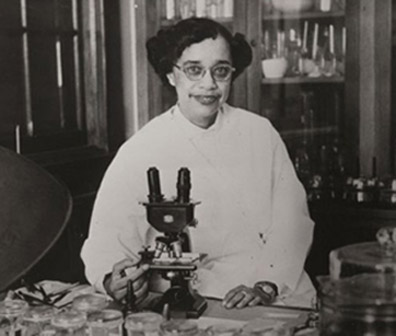
There weren’t many African-American women biologists in the 1940s. James Jay found only 3 who earned PhDs by 1969 – another 14 earned PhDs in zoology. One of them was almost certainly Mary Logan Reddick, a neuroembryologist who earned a PhD in 1944 from Radcliffe College, the women’s Harvard back then. She was the first woman to teach biology at Morehouse. She then became a full professor at the University of Atlanta, until she died at 51. Reddick also studied at Cambridge University on a Ford fellowship about 10 years after her doctorate. She could be the first African-American woman to have been awarded an science fellowship for international study. More on Reddick at Wikipedia.
(Fair use photo – copyright, Harvard.)
2 February: Carolyn Beatrice Parker

People have long said the first African-American woman physicist who reached PhD level was in the 70s. But Carolyn Beatrice Parker researched polonium on the Dayton Project, part of WWII’s Manhattan project. She completed her physics PhD at MIT in the early 50s: leukemia, likely plolonium-induced, stopped her being able to defend it. She died at 47.
Parker (b. 1917) was related to marine biologist Joan Murrell Owens, another pioneering African-American woman scientist. More on Parker at Wikipedia.
1 February: Alma Levant Hayden
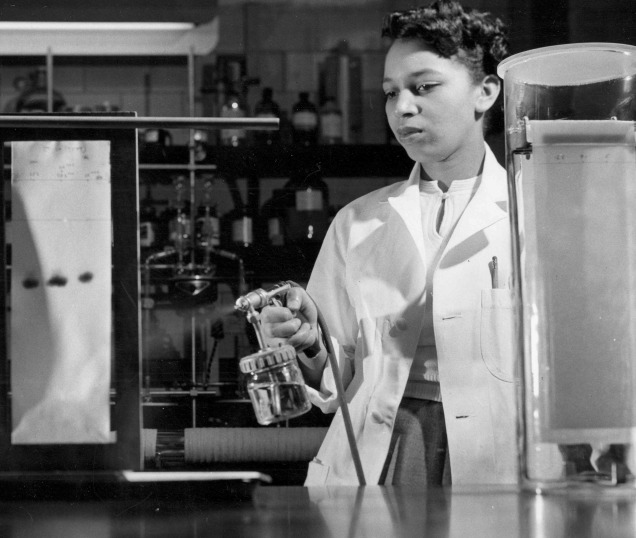
This photo of Alma Levant Hayden was taken at the National Institutes of Health (NIH) in 1952. Born in 1927 in South Carolina, her love of chemistry and Master’s degree from Howard University saw her blaze a trail in government science. After her time at the NIH, she became the first African-American FDA scientist we know of. Hayden came to national attention when she unmasked a successful and expensive cancer treatment scam. More on Hayden at Wikipedia and on what she’s doing in that photo at the NIH.
Hilda Bastian




